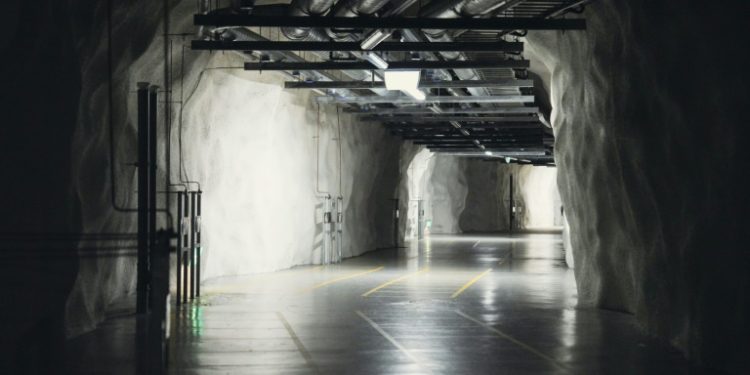Pools, playgrounds and amusement parks: Finland’s underground installations, which can be doubled as bombing, have become an inspiring approach while Europe accelerates preparation after Ukraine’s invasion by Russia.
Finland shares a 1340 -kilometer border (830 miles) with Russia. Its network of civil defense shelters is an integral part of its preparation strategy, which dates back just before the Second World War.
Overwhelmed in the rocky substratum of the Helsinki granodiorite tens of meters underground, people of all ages swim and splash in swimming pools or relax in the saunas in the cavernous swimming room of Itakeskus.
The complex is one of the 50,500 shelters of the Civil Defense of Finland which have space for around 4.8 million in its population of 5.6 million.
Intended to accommodate up to 3,800 people, the swimming pools can be emptied of water and transformed into a bombs shelter within 72 hours.
“This is the largest civil defense refuge in the world which facilitates a swimming room,” said Teemu Raatikainen, who has been the chief of the interview for almost 30 years, explained proudly when he visited AFP.
Finland’s security strategy based on long -term investments in the army and preparation – including civil defense shelters – aroused international interests after the invasion of Ukraine by Russia in 2022 and the security situation deteriorated through Europe.
“We always have this use in multiple time – in peacetime and in wartime – of our shelters,” said Jarkko Hayrinen, a senior rescue official at the Ministry of the Interior of Finland, because he showed AFP another of the great shelters of Helsinki bombs.
– Tunnels with explosions –
With a space for 6,000 people, the Merihaka refuge in the center of Helsinki is home to an underground playground, several ballrooms and a gym.
“The shelters are very well maintained because people use them in normal times,” said Hayrinen.
The entire Finnish “cultural state of mind” involves all sectors of society in security has become something “brand” for Finland after joining the NATO military alliance in 2023, Matti Pesu, principal researcher at the Finnish Institute of International Affairs.
“And civil defense shelters are a real tangible symbol of how the authorities are preparing to protect citizens in emergency situations,” he added.
High -level guests such as the Ukrainian president Volodymyr Zelensky and King Frederik X and Queen Mary of Denmark recently made guided tours through the zigzag tunnels to the test of the breath of the Merihaka refuge.
– Long tradition –
“The first act on the construction of defense shelters was already adopted in 1939, two weeks before the start of the winter war,” said Hayrinen, referring to the invasion of the Soviet Union of Finland which lasted more than 100 days.
“Finland was not ready to defend civilians in wartime and it was a difficult lesson for us,” he added.
The Nordic country now has bombs shelters to protect almost all of its citizens, Helsinki offering a space for 900,000 people – enough to accommodate all residents of the capital and thousands of others.
Designed to withstand the explosions, the collapses of buildings, radiation and toxic substances, the largest public shelters in Finland were mainly located in populated areas.
Buildings or housing complexes with a floor surface exceeding 1,200 square meters are held by law to have a bomb shelter.
The other countries with wide access similar to bunkers are Switzerland, Sweden, Norway and Israel.
“All these countries are united by a tradition of neutrality or a strategically difficult position,” noted Pesu.
Finland, where military service is compulsory for all men and volunteers for women, can quickly mobilize some 280,000 soldiers and the total military reserve includes some 900,000 people.
On April 1, the country announced that it would increase national defense expenses to at least three percent of GDP by 2029 in response to the security threat posed by Russia.
ANK / JLL / ACH / RJM


